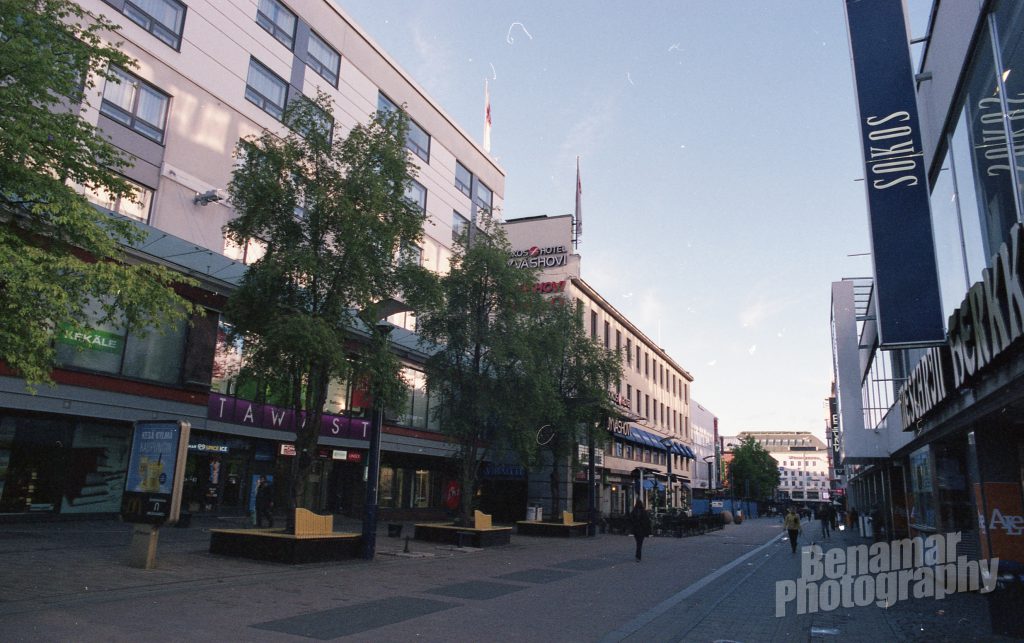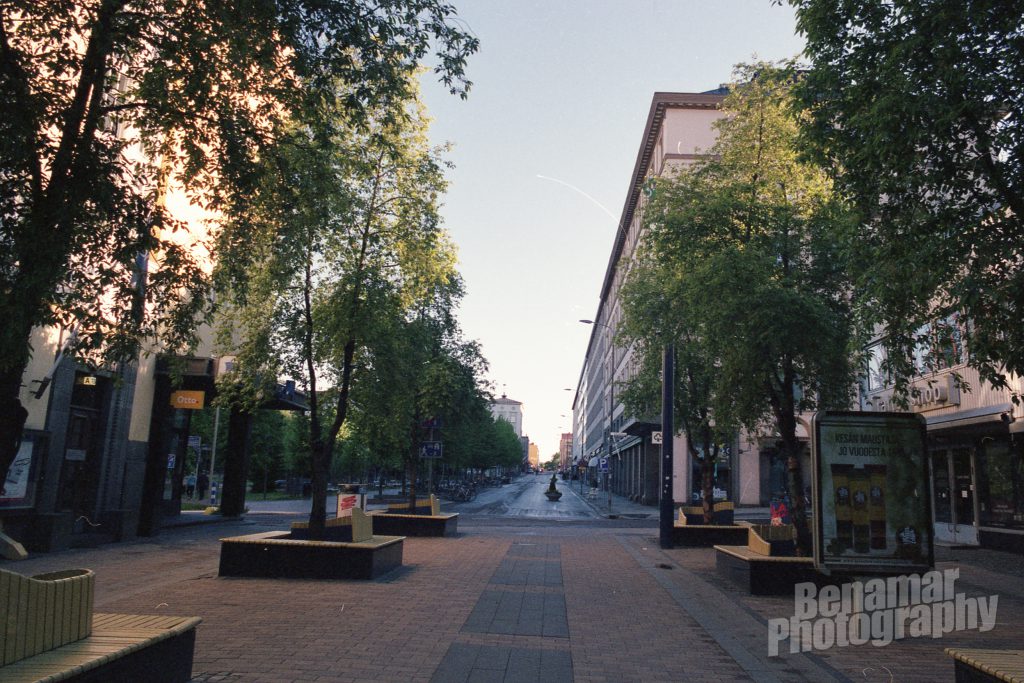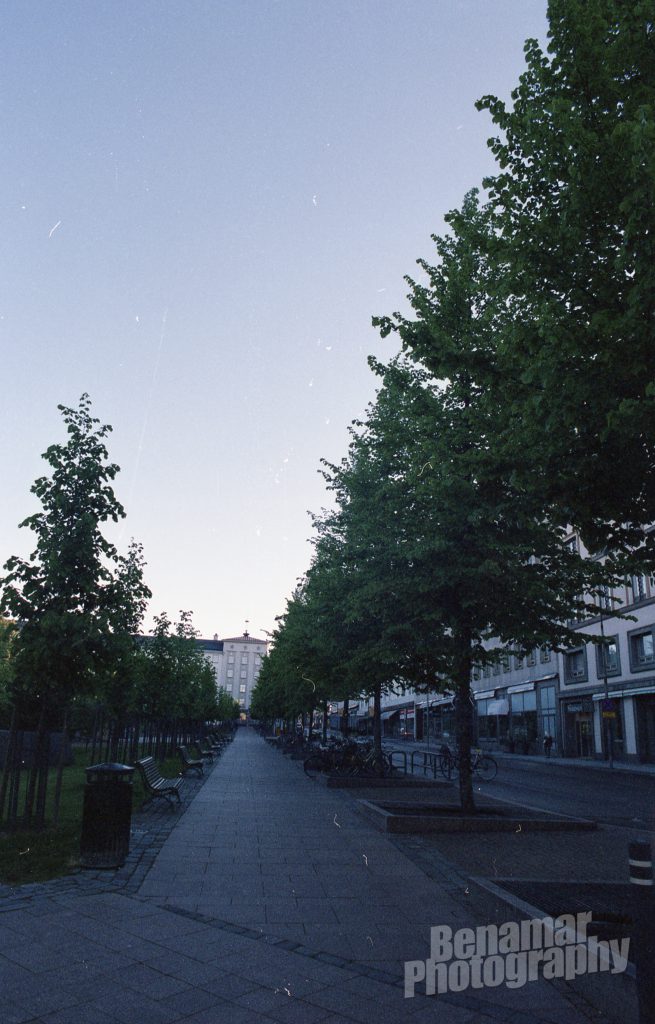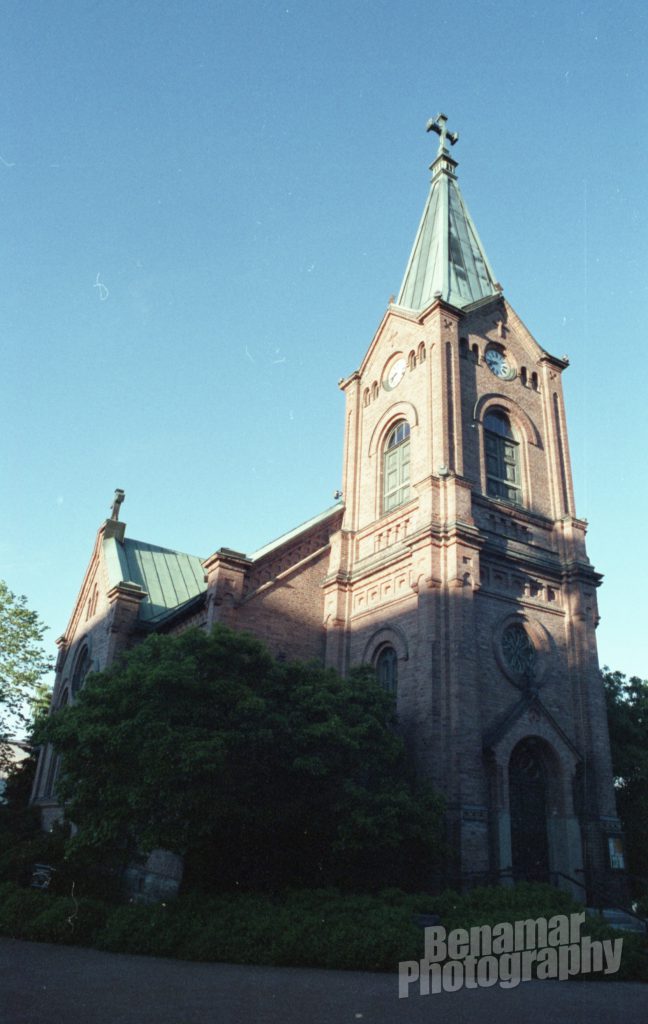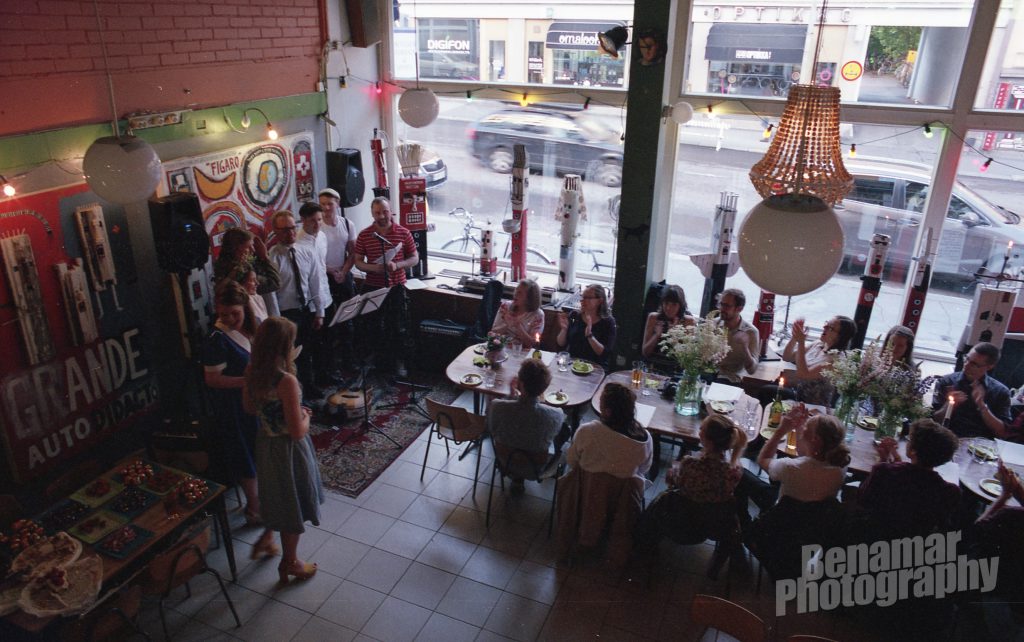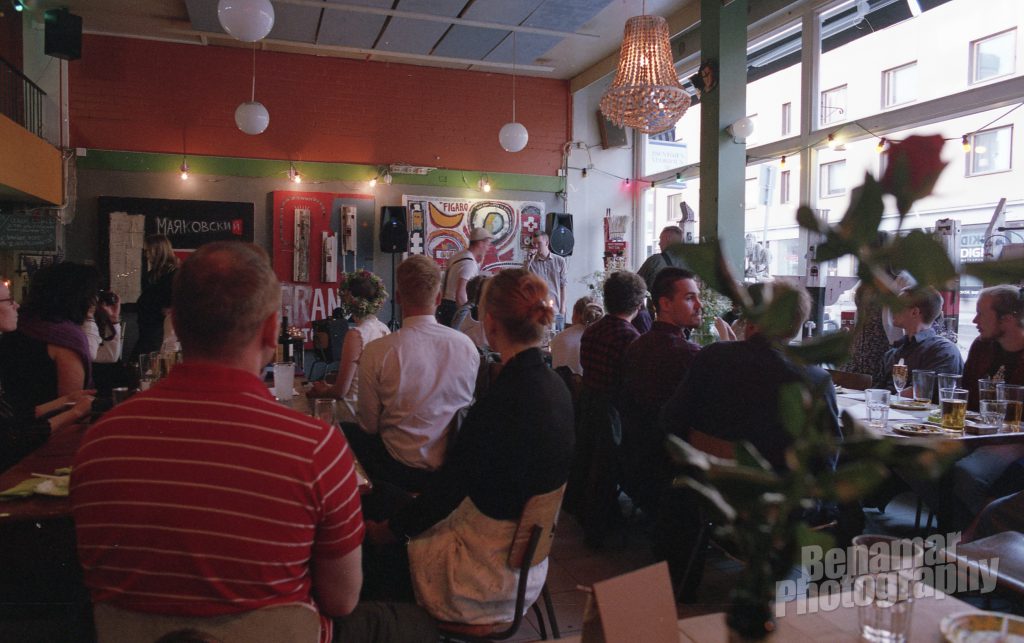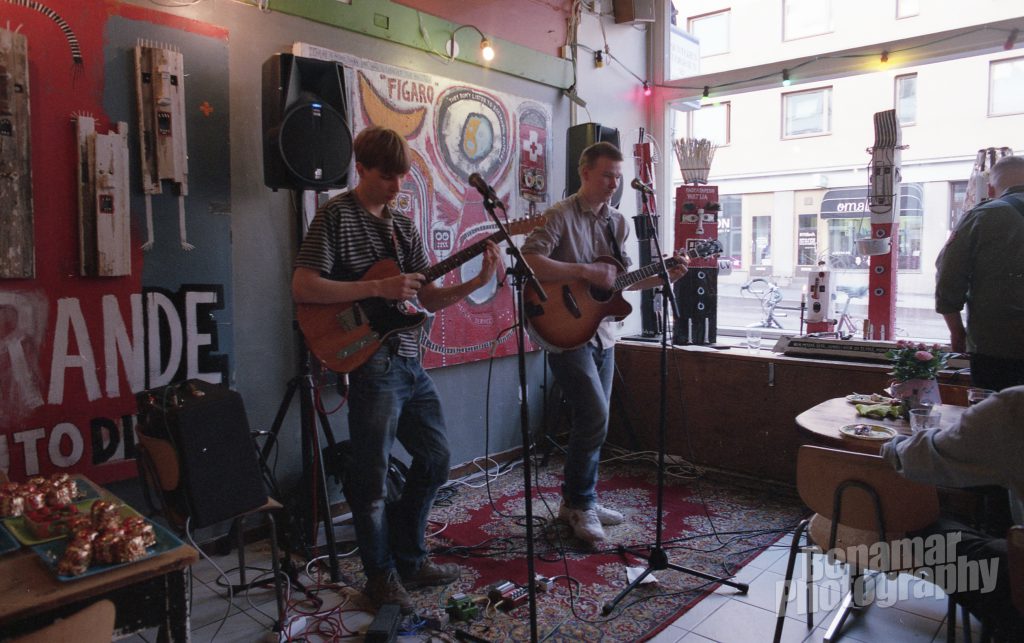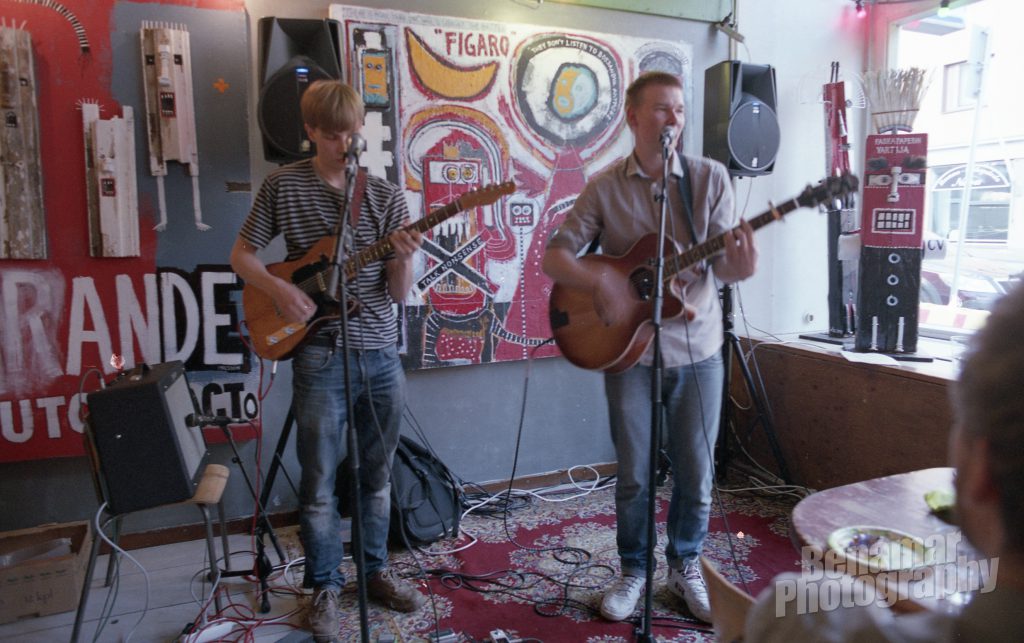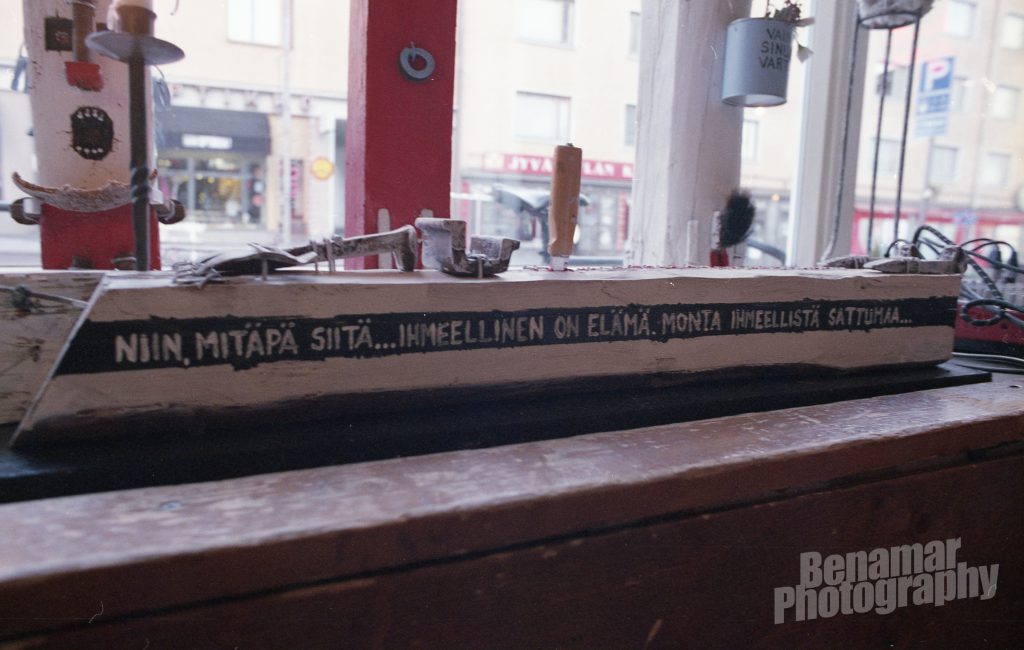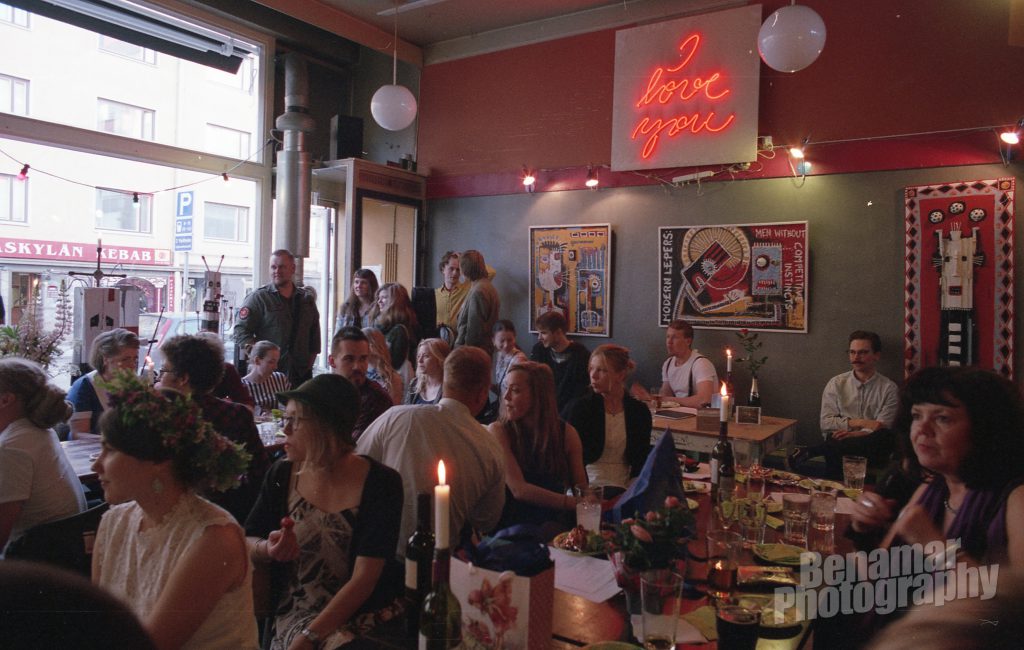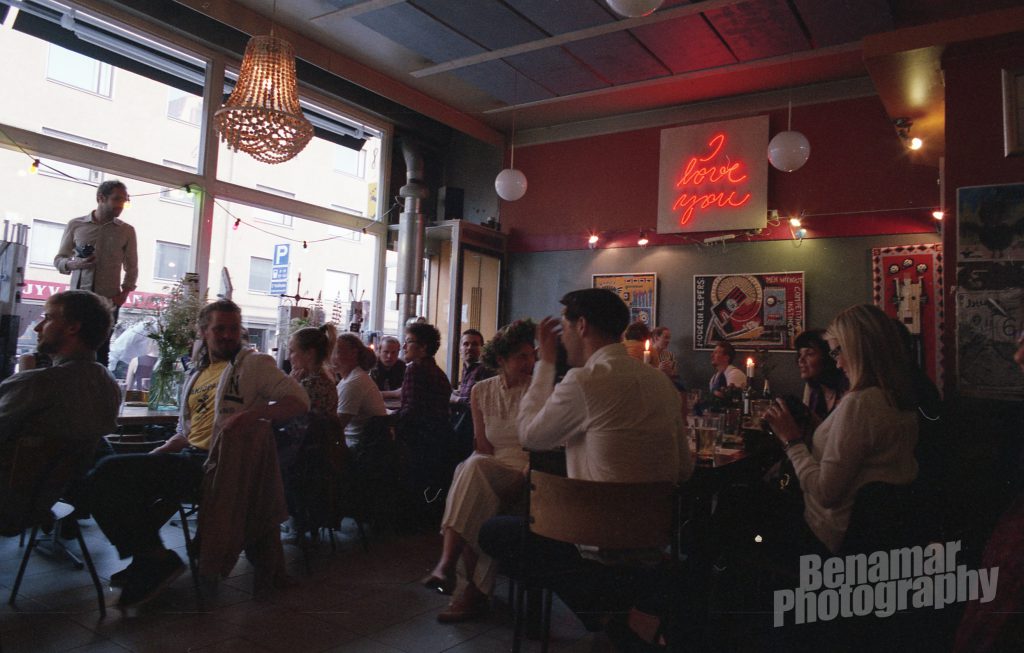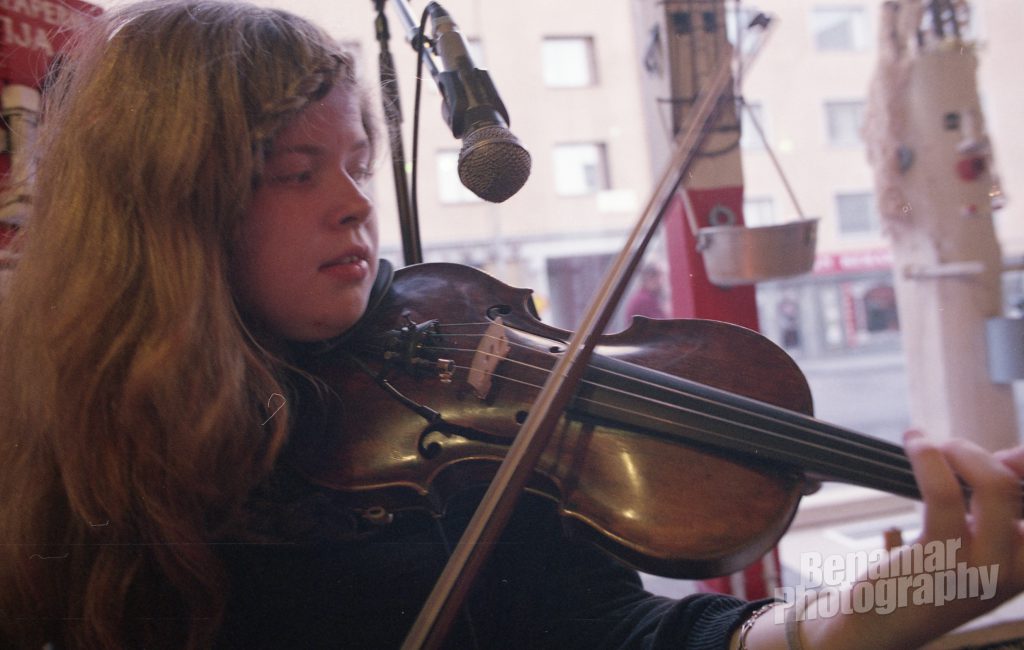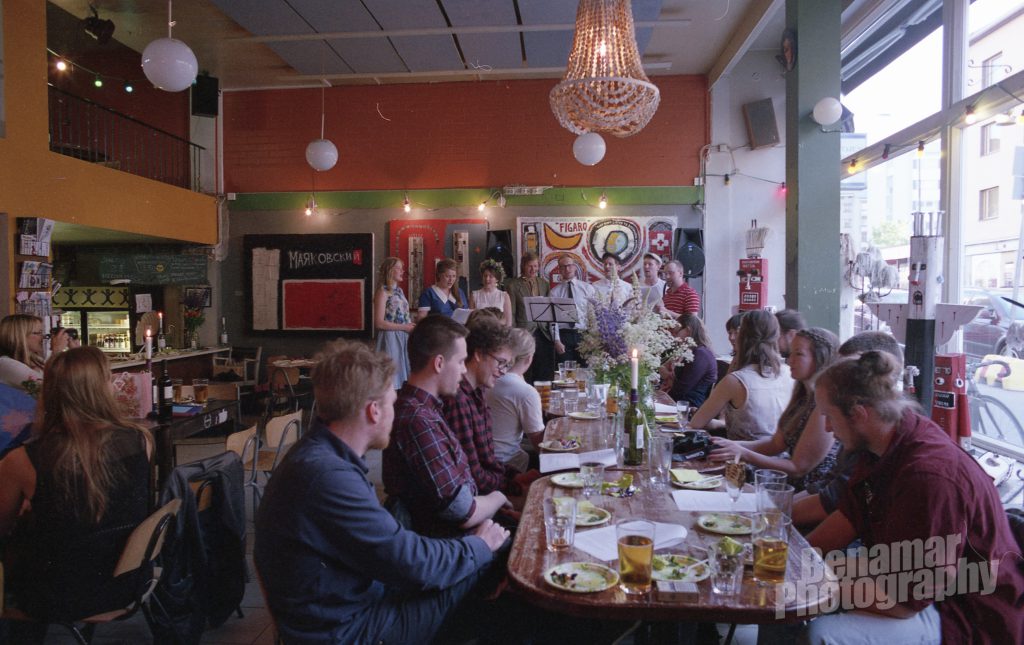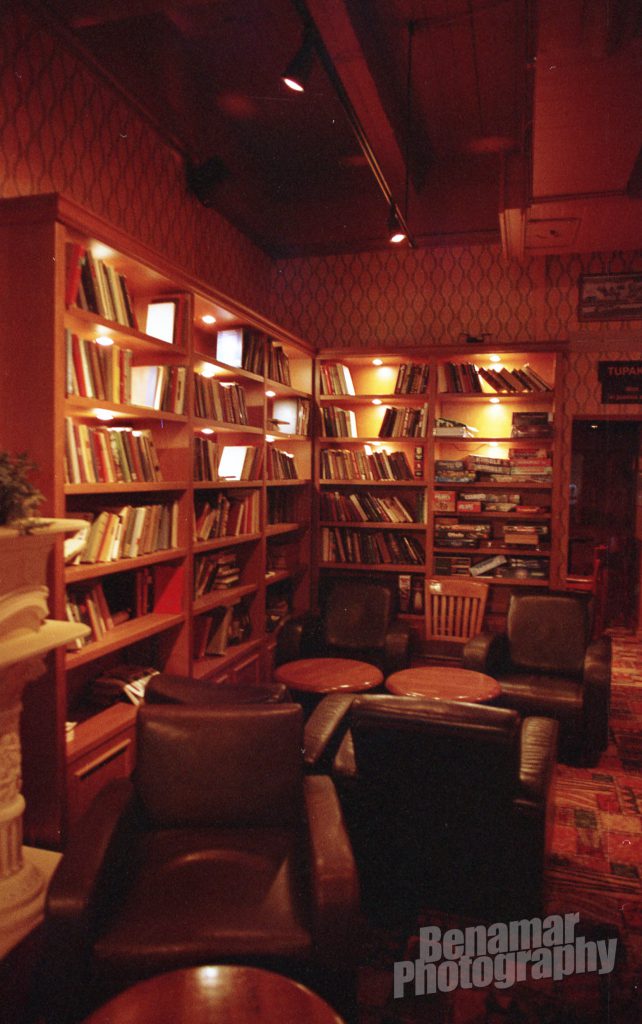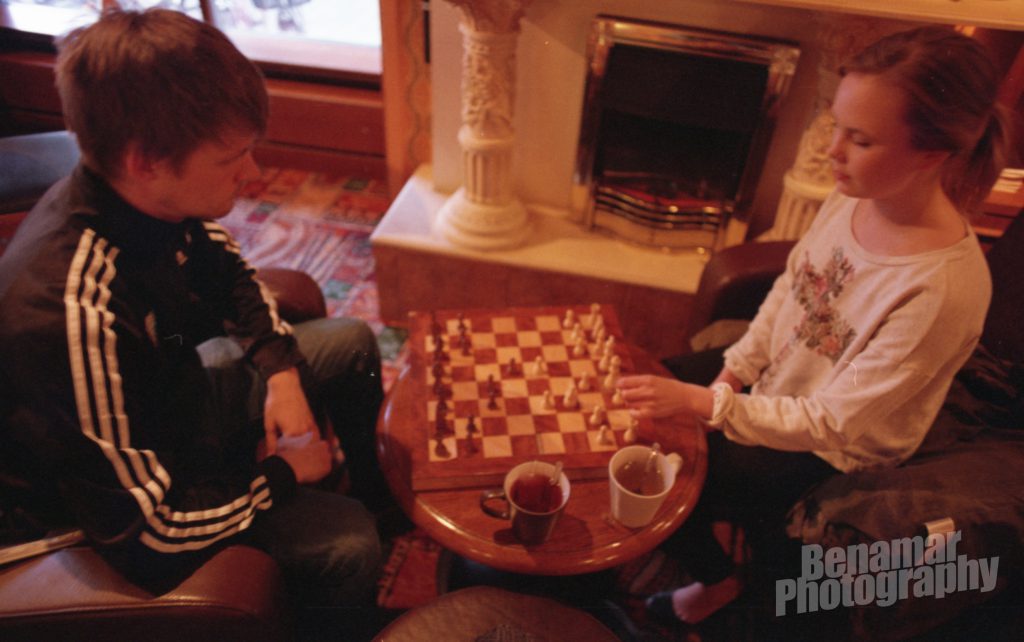I have collected various film era lenses and cameras during the years when they still were relatively cheap. But being a digital photographer and using the old lenses on mirrorless cameras, it never occurred to me to try these lenses as they should be used – with film. So, that’s what I did a few days ago when there was a few hours when it was not raining (it’s been raining for a couple of months now).
My original plan was to use the Minolta X-700 camera for taking the photographs, but when loading the film I noticed that the film advance lever nor the shutter were not working, which means the X-700 probably has a failed capacitor I’m going to fix once I get the replacement part next week. If I get it fixed, I’ll have two working X-700’s, as I bought another one for cheap when I saw one. I like the camera, the looks, the weight and the usability of it. Most of my old lenses are for Minolta, so that’s why having the X-700 is important for me as well. I also have a Minolta SRT-100, which has same kind of problem as the X-700 and it’s also very dirty, so it is not worth fixing as one can buy these for almost nothing in almost brand new condition.
All the photographs in the article were taken in Jyväskylä, Finland, on 16th of June, 2015 between 20:30 and midnight. The sun does not set properly at this latitude during summer, so that’s why they look like taken in totally different time of day.

I had bought a roll of Fujifilm Fujicolor Superia X-TRA 400 Color Negative Film with 36 frames. But because the X-700 was broken the night I was about to go shooting, I had to use the only working film camera I had, which was Canon T70. The problem with Canon was that it does not have aperture priority mode at all, which the mode I most often use. I also did not want to go fully manual on my first roll of film in maybe 25 years, so I decided to have it in program mode. The Canon T70 program mode is advanced for the time (1984, being the first digital film camera Canon made). I noticed that the program mode is waste of time and I won’t use this camera at least in program mode, because it prefers way too small apertures. I had a Canon FD 24 mm F1.4L lens attached to the camera, so the there was no excuse for not taking the shot because of lack of light. I think the widest aperture the camera chose at some point was F4 when I was shooting indoors in the evening. I had a few frames where the shutter time was too long because of the aperture, but to my surprise almost all photos were ok. Please note that all photographs were scanned as is, with no sharpening, no dust of hair removal and I did not change the colours in any way to have them look just like they came out from the camera. Once the photographs are on Lightroom, of course I can make them better, but then you’d be hard pressed to see what’s the difference in film and digital photographs. I did not have any kind of filter on the lens as I did not have anything of that size.
In the three photographs above, you can notice the different tint of green and red the film has. On the bottommost photograph is the “red brick house” built hundred years ago or so and as you can see, it does not look very red on the unedited photograph.
It was difficult to compose the photographs, because I did not know where the real limits of the photographs are and sometimes the camera took so much time before the shutter was released that the composition changed just a bit during that time and something I intended to be in the frame was missing. I don’t have a manual for the camera and while I had a tripod with me, I was not using the tripod most of the time because of a technical problem it had. It was also a bit hard to get everything straight as the camera did not have any sign of level.
I did not develop the film myself. Not because I don’t know how to do it, but because I wanted to see the first roll professionally done. I also ordered paper copies so I can compare the results. I noticed that the printing process lacked the dynamic range the film itself had, so the pictures of Jyväskylä City Church were almost black from the shade side. The camera did have exposure lock mode, so I could have metered the exposure from the shadow and then recompose, but then the sunlit side of the church would have been overblown. On the negatives the problem is not appearing and after scanning them all to computer, they look just fine. So, I guess I would have ended up with the same result with digital files if I took them to the same place for printing. I know the picture above is not the best picture of the City Church and none of the pictures on this roll are particularly spectacular, but it was a fun experiment.
The bar Vakiopaine had a private event that ended at 21. Three people had graduated, so that was the reason for the party. But it’s a nice and different bar anyway, because there is always some changing art on the walls and a theatre downstairs. There was several musical performances, but the one below is by Muuan Mies.
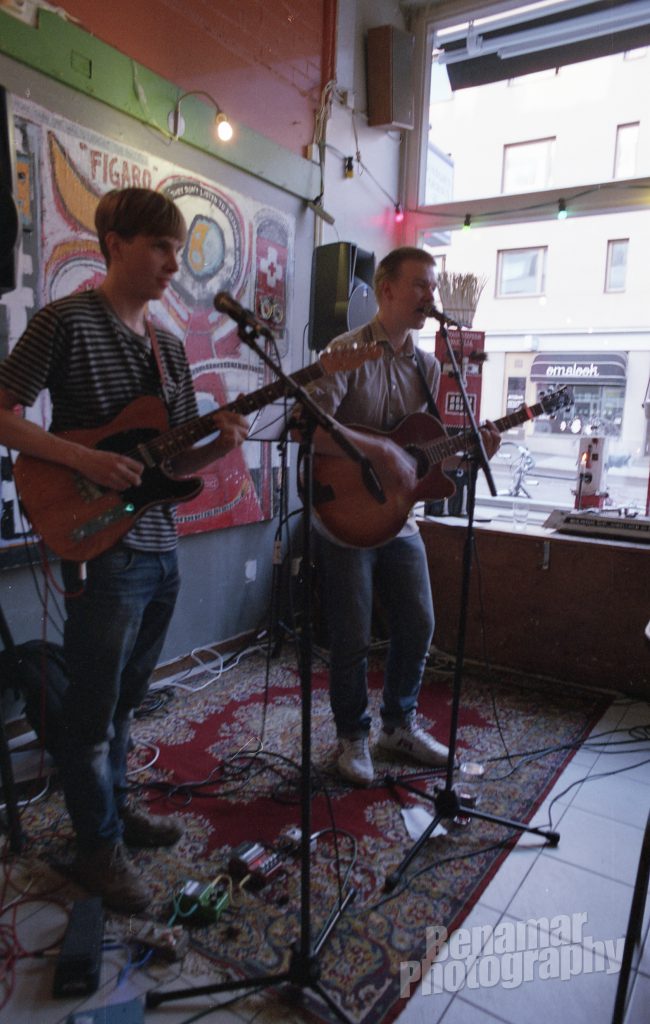
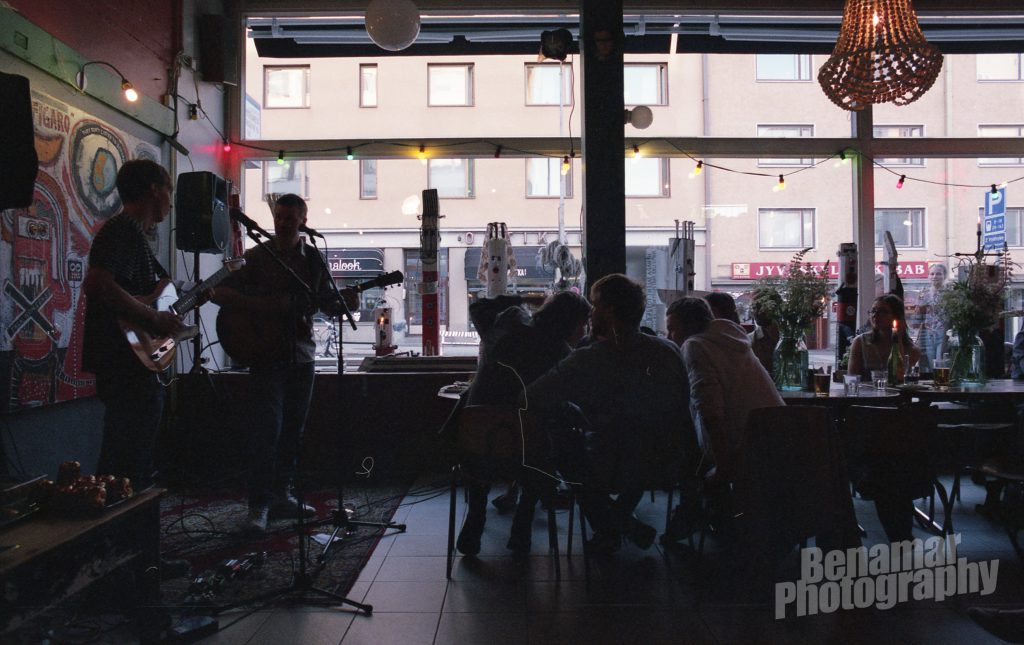
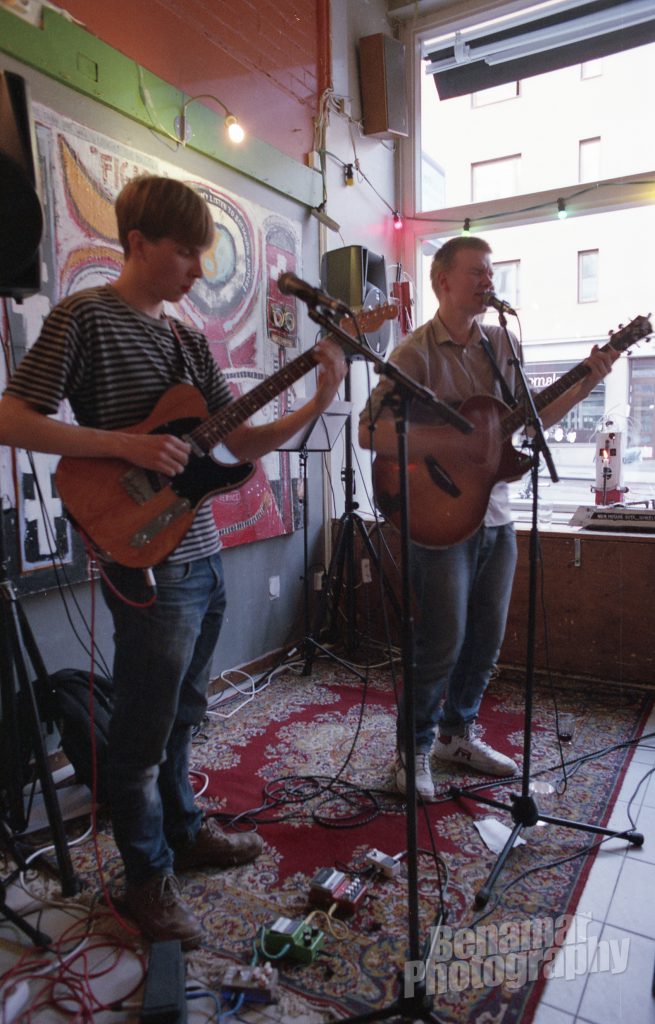
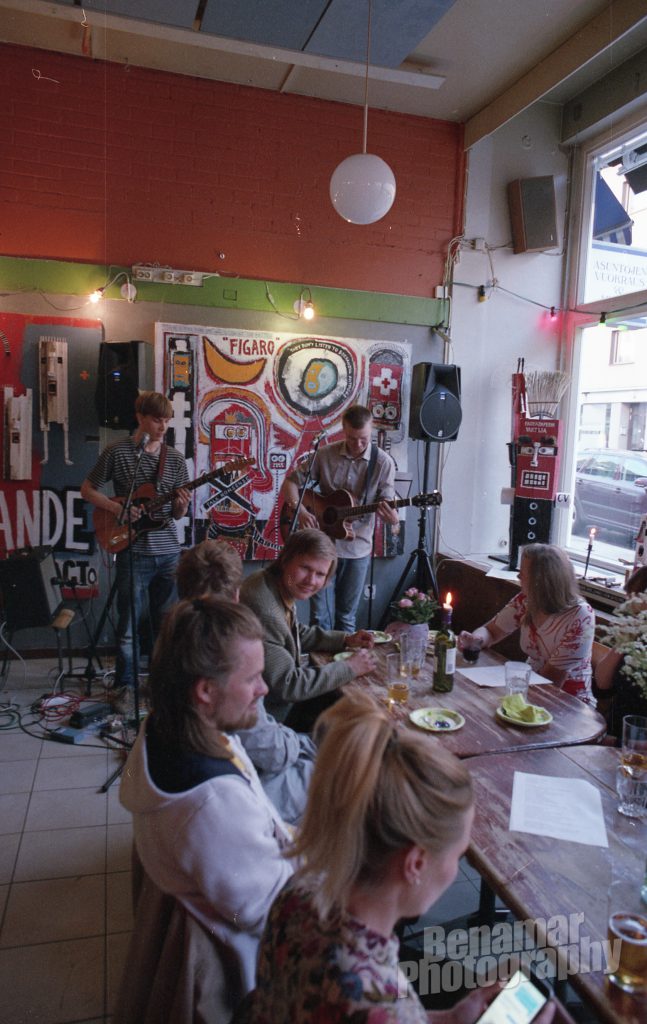
The thing about Vakiopaine it feels like a time capsule and people there are really friendly, most being university students (the bar is near the university campus area).
I suppose the artist’s name was mentioned somewhere, but I did not catch that during the short time I was there. I don’t know the real schedule, but I think the art changes about monthly. The events such as “poetry and cheap beer” are an art form also.
Sadly I did not remember to ask everybody’s name, so I could thank them in the article, but I can edit this afterwards, if the persons find themselves here.
Next I went to Hemingway’s, which is about 1,5 km north from Vakiopaine on the other end of the walking district. The place was almost empty, as it really is a huge bar and it was Tuesday. In Finland people don’t gather to bars after workdays, so during the week the bars are rarely very full.
On the picture below the biggest problem was that on the available light I had I did not properly see the focusing on the Canon T70. The wider the lens, the worse the focusing is on that particular camera. So I ended up approximating the distance and taking the shot without the focusing screen, which looked about the same in either end of the focusing ring. You can probably see that the focus is not spot on, but who cares, if people are playing chess instead of getting drunk.
This was the first roll of film on a camera I did not know, so in my mind the results are good enough. I don’t think you can fully emulate film using computer, because there is always something that the computer does now know about the film being used. The film I used this time was the cheapest (well, the only) C41 process film I got from the nearest photo shop. I know different films have different looks and if you are shooting B&W, you can use coloured filters and different development times and tricks to change the outcome. As I was using the commercial developer, they processed the film as is and I got probably the look the film itself has. If I had the time and patience, I might try to edit my digital photographs to look the same, but I leave that to another time. But to be honest, why buy film emulation software when you can still buy the real thing for less?
I have ordered myself a batch of ISO 200 film and a Canon F1n camera to replace the T70 when using Canon FD lenses. I think my next rolls I shoot with the Minolta X-700, which has very magical touch to it. Film cameras that used to cost very, very much at the time can still be bought very cheaply. However, both the lenses and the cameras are steadily rising in price and I don’t think there will be new film cameras to be made besides Leica. So, unless you have really deep pockets, get yourself some film gear while you still can, the situation may not last forever. It’s only maybe 15 years ago when nobody seemed to want vinyl records and you could buy a truckload for nothing, but that has also changed. Right now the lenses I have bought years ago are so expensive I would not buy them now. But there are still many Minolta MD and Canon FD lenses that are excellent and not very expensive. Buy prime lenses as the zooms were as bad as they are today. You have feet you can use for zooming (yes, I know that does not work for everything, but I’m talking general street photography). For both mounts you can also find cameras that don’t cost that much and if you’re lucky, you can buy both the lens and the camera together for the price of one. If you really think about it, film photography is not that expensive as you don’t have to upgrade your gear every x years, whatever the x in your case is. They don’t get old, because they already are. Neither do they get obsolete, as they have everything you need to shoot good photographs. If you count the price of one full frame digital camera and a good lens for it and compare it to a film equal, you can purchase a lot of film with the difference. What you don’t get with the digital camera is the look and the mindset while photographing, which is as important as the film itself. It slows you down and makes you think, which do only good in today’s world.
